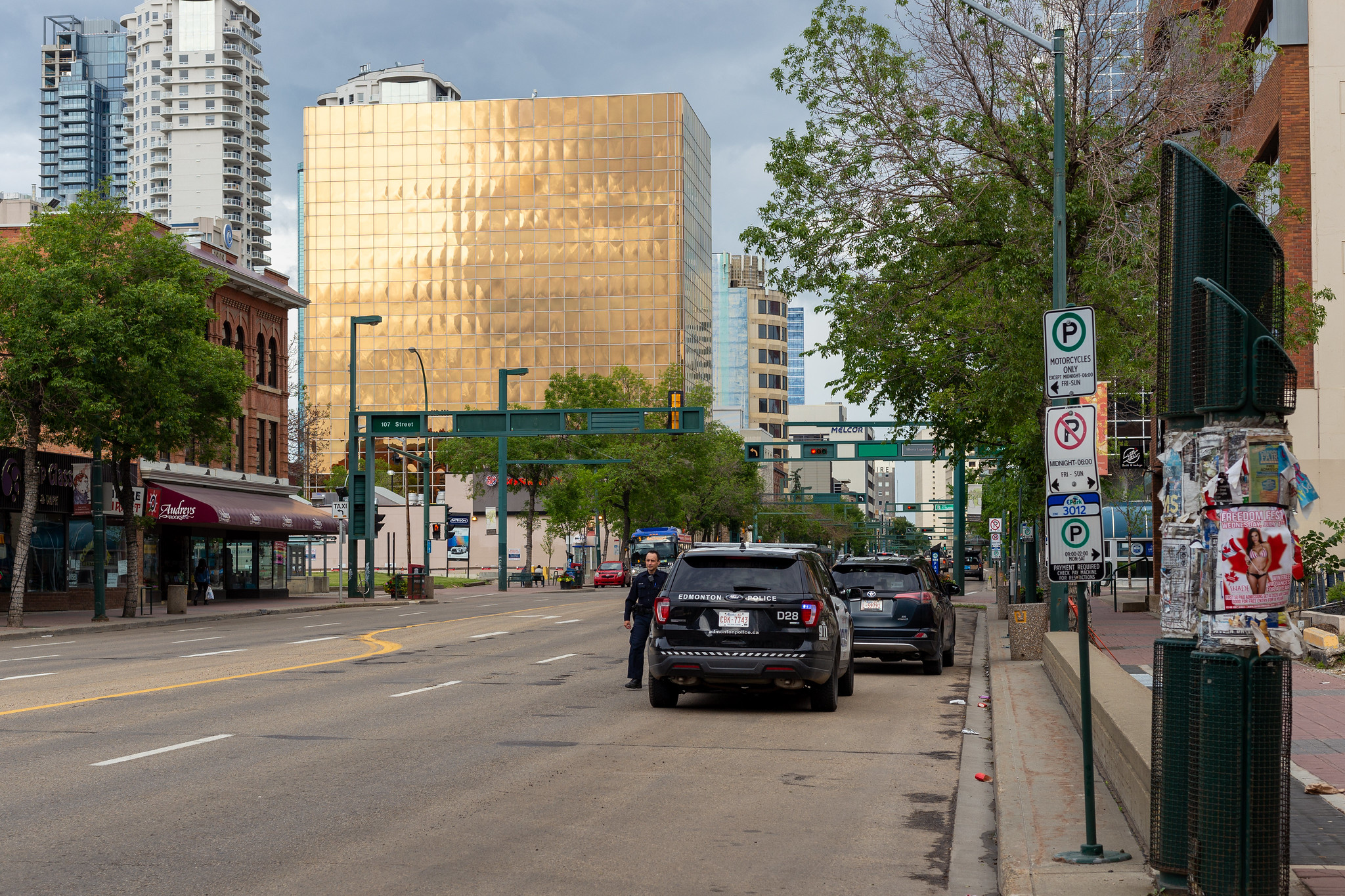A member of Congress has a bold plan to take police out of traffic enforcement—with money earmarked to incentivize cities to do so. According to the project Mapping Police Violence, 7 percent of police killings in 2022 were initiated by a traffic stop, and there have been 622 such killings in the past six years.
The plan’s goal is to prevent these deaths by making sure cops and motorists don’t cross paths in the first place. Putting it into action will mean overcoming opposition from police and related interest groups—and ensuring that replacement systems don’t create new injustices.
Rep. Torres drafted the bill as a direct response to the police beating and murder of Tyre Nichols in Memphis, Tennessee.
On February 7, Representative Ritchie Torres (D-NY) introduced HR 852, to “establish a grant program for civilian traffic violation enforcement.” According to Bloomberg and statements from Torres, the bill would create a $100 million annual grant program, with money awarded to cities that replace traffic cops with unarmed civilian officers or technology.
Rep. Torres drafted the bill as a direct response to the police beating and murder of Tyre Nichols in Memphis, Tennessee, on January 7.
Black Americans make up 13 percent of the total population, but were victims of 26 percent of all police killings in 2022. Black people are three times likelier than white people to be killed by cops—and also 1.3 times likelier to be unarmed when killed.
Over 20 million cars are pulled over by police every year, meaning more than 34 drivers are stopped every single minute. And killings are not the only negative consequence. “Research on police traffic stops has consistently found widespread racial disparities, with Black drivers more likely than white drivers to be pulled over in cities across the country,” wrote Libby Doyle and Susan Nembhard for the Urban Institute. Black and Brown drivers are also much likelier to be searched; just 20 percent of traffic stops lead to any illicit items—like guns or drugs—being found.
When so many of these stops contribute to racial injustice and abuses, why do they continue so heavily? Money is part of the answer. Police departments—and the cities that employ them—pull in large sums from issuing tickets and collecting fines and fees from drivers.
Many cities and states have already taken steps to change how road and highway safety is enforced, though legal barriers mean they have not yet gone so far as to remove police completely.
A New York Times investigation found that over 730 cities and towns nationwide depend on this income stream for at least 10 percent of their revenue. The incentive is stronger for cities without a strong tax base—for example, the small rural town of Henderson, Louisiana, collected $1.7 million in fines in 2019 making up 89 percent of its revenue that year. If cops don’t hose down drivers for all this money, the town simply can’t keep the lights on. What’s more, the federal government encourages these police practices in the form of $600 million in annual highway safety grants. To keep the federal money flowing, you have to pull over more drivers.
“For decades, [the departments of Justice and Transportation] have sponsored research and issued guidance that encourages law enforcement to conduct traffic stops in order to combat ordinary crime,” wrote 71 organizations in a February 2022 letter to the Biden administration. “Over the years, these programs have taught police they can fight everything from drug trafficking to terrorism with a traffic stop.”
So could we end police traffic stops? In fact, many cities and states have already taken steps to change how road and highway safety is enforced, though legal barriers mean they have not yet gone so far as to remove police completely.
One example that stands out is Berkeley, California. In July 2020, Berkeley lawmakers approved a package of reforms to civilianize traffic enforcement. Then in February 2021, they unanimously voted to limit “low level” traffic stops—like seatbelts or expired registrations—and focus instead on safety violations like speeding.
But the city is barred by state laws that prevent civilian traffic enforcement, and even prevent automated speed cameras. In the wake of Tyre Nichols’ murder, activist groups like the Anti Police Terror Project are now lobbying for a statewide overhaul to end police traffic enforcement, and create a new civilian agency.
One tactic is to replace traffic fines with vouchers to pay for issues like light repairs.
So what can local governments actually do to actually improve things? The Vera Institute of Justice has described several ways that cities can both improve safety and mitigate racist police practices. One tactic is to replace traffic fines with vouchers to pay for issues like light repairs. “These vouchers help break the cycle of debt incurred from fines, improve road safety, and offer a non-punitive solution,” the authors wrote, citing the Lights On! program launched in Minneapolis after the police murder of Philando Castile. (This program still doesn’t take cops out of the equation.)
The researchers also recommended that cities deploy automatic speed cameras to promote safety while reducing police interactions. A 2009 study in Scottsdale, Arizona for example, estimated that the city’s speeding cameras saved the state $17 million in accident costs. But technology can also bring new challenges and inequities; the authors urge cities to ban facial recognition software, so these cameras don’t become surveillance tools. They also recommend that cities create civilian agencies to manage cameras—not police—and allow oversight boards to monitor how they are working, including making sure that Black and Brown drivers are not disproportionately targeted for tickets.
The bill now in Congress is likely to struggle in a Republican-controlled house. But it’s at least a welcome beginning in helping many more cities nationwide move in the direction of “civilianizing” traffic enforcement.
Photograph by Mack Male via Flickr/Creative Commons 2.0.





Show Comments